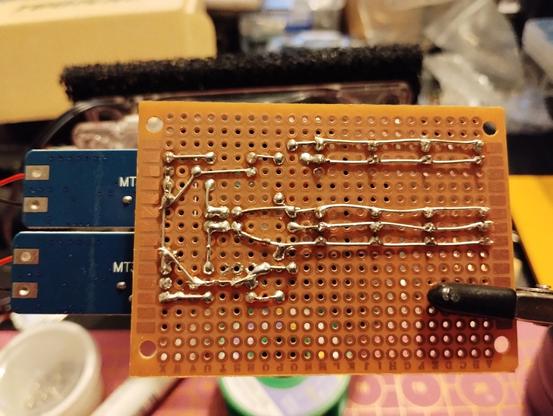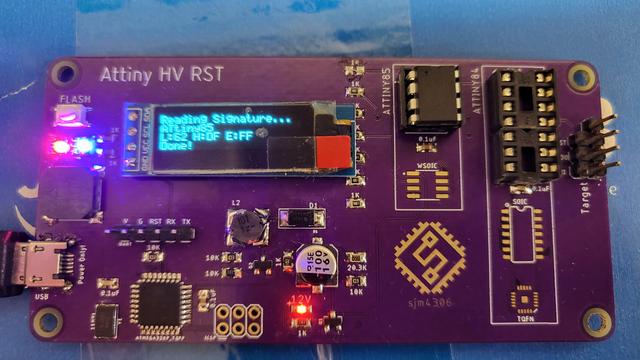En el contexto de los fastidiosos apagones que estamos viviendo, he comprado este cable para Router, mas que nada para entender como funcionaba, convirtiendo de 5v a 12v y permitiendo utilizar un PowerBank para alimentar un Router o Modem de internet. diez dolarazos cuesta el adefesio para lo que hace.
He desarmado este dispositivo para tratar de entender como funciona. Antes ya he desarmado mas cosas, como un proyector de juguete.
Sobre el «Cable para Router»
El artilugio en si no tiene un nombre. Es una curiosa improvisación china basada en la necesidad de afrontar el aburrimiento de hasta doce horas de apagón con el único servicio relativamente confiable, el internet. La tarifa plana permite matarse viendo series, películas, animes o simplemente andar a la deriva por las redes sociales. Me encantaría saber si es un producto existente de mucho tiempo atrás, o es algo que se diseño sobre la marcha ante la crisis energética de mi país. Dudo que seamos tan importantes, pero esta claro que hemos causado una gran impresión sobre el mercado internacional al dejar sin abastecimiento tiendas que distribuyen fuentes de energía y bancos de baterías.
Características Técnicas
Tras un poco mas de investigación he encontrado que este tipo de cables es muy utilizado (obvio no en mi tercermundista país) para todo tipo de Juguetes. es posible encontrarlo de hecho en Amazon con el nombre de USB to DC 9V 12V Charging Cable pero también con el nombre de Universal Power Cord for Toys lo que podría explicar su bajo desempeño en requerimientos mas avanzados.
- Conector macho USB
- Conector Macho 12v tipo barril 2.1mm
- Entrada: <36v 2A max
- Salida: 12v 0.7A (8W)
Si, no hay mas specs XD
Probablemente no te sirva
O mas bien es cuestión de suerte. Seguro hay mejores cables, pero en este caso, la salida es de 0.7A. Esto significa que tu Router debe consumir menos de eso o simplemente no funcionará. O por el contrario, funcionará pero seria menos estable.
La mayoría de los Routers tienen un consumo de 12v a 0.5A, pero no siempre se da el caso. He probado con algunos de los Routers que tengo y entre otras cosas, el conector macho de 12v no siempre fue compatible o el Router requería hasta 2A, con lo que los 0.7A que ofrece este cable, simplemente no sirve.
Otro problema que encontré es que si se da el caso de que usas varios routers y quieras utilizar «el pulpo» un separador de cable de 12v, seguramente no vas a poder pues, aunque el Router sea de 0.5A, usar este cable divide la potencia para la cantidad de dispositivos conectada. Así, si tienes dos, 0.7/2 te dará 0.3A para cada uno, con lo que probablemente ni siquiera encienda.
Tecnología
El convertidor elevador o convertidor boost (del inglés boost converter) es un convertidor DC a DC que obtiene a su salida una tensión continua mayor que a su entrada. Es un tipo de fuente de alimentación conmutada que contiene al menos dos interruptores semiconductores (diodo y transistor), y al menos un elemento para almacenar energía (condensador, bobina o combinación de ambos). Frecuentemente se añaden filtros construidos con inductores y condensadores para mejorar el rendimiento.
Fue relativamente fácil descubrir el funcionamiento de este «cable para router» al notar el elemento inductor; el componente marcado con 4R7. La tecnología es un convertidor elevador o Boost Converter. Puedes investigar como funcionan en la wiki o preguntarselo a alguna IA. Debido a que eso es todo el circuito, no hay mucho que explicar.
La entrada, por el formato del conector USB es de 5v, pero teóricamente puedes inyectarle un rango entre 3 a 48v, da igual. La salida de amperaje esta determinada por la calidad de los componentes y su capacidad de disipación. En las pruebas que he realizado, ante el trabajo mas intenso del Router, ha comenzado a calentar y al estar encerrado en una caja plástica sin ventilación, corre el riesgo de sobrecalentar en poco tiempo.
Conclusiones
¡Hey, esto es mas seguro que soldarle el cable del router a una batería de motos!
Un Powerbank ya tiene sus sistemas de protección y las baterías de litio pueden aguantar sobredescargas sin mayores riesgos, por lo que el cable es solo el paso faltante para aprovechar esa energía almacenada. Eso significa que una batería de 20000 maH podría estar manteniendo un router de 0.5ma mas de 4 horas sin mayores sufrimientos. Las baterías de plomo sufren del efecto memoria, que hace que descargas profundas acorten la vida útil de la batería, ademas de que no hay un sistema controlador de carga que evite la descarga total ni la sobrecarga del aparato. Claro, las baterías de plomo son mas seguras que las de litio en estas circunstancias, pero ya han habido algunos incendios provocado por estos sistemas improvisados.
Si el apagón te esta haciendo sufrir demasiado, recuerda tomar precauciones manteniendo controles de seguridad y muy especialmente, manteniendo las instalaciones lejos de objetos inflamables o de niños.
https://interlan.ec/2024/12/09/diy-desarme-de-cable-para-router/
#boostConverter #cosasChinasTruchas #desarme #DIY #internet #solucionesDeEmergencia



